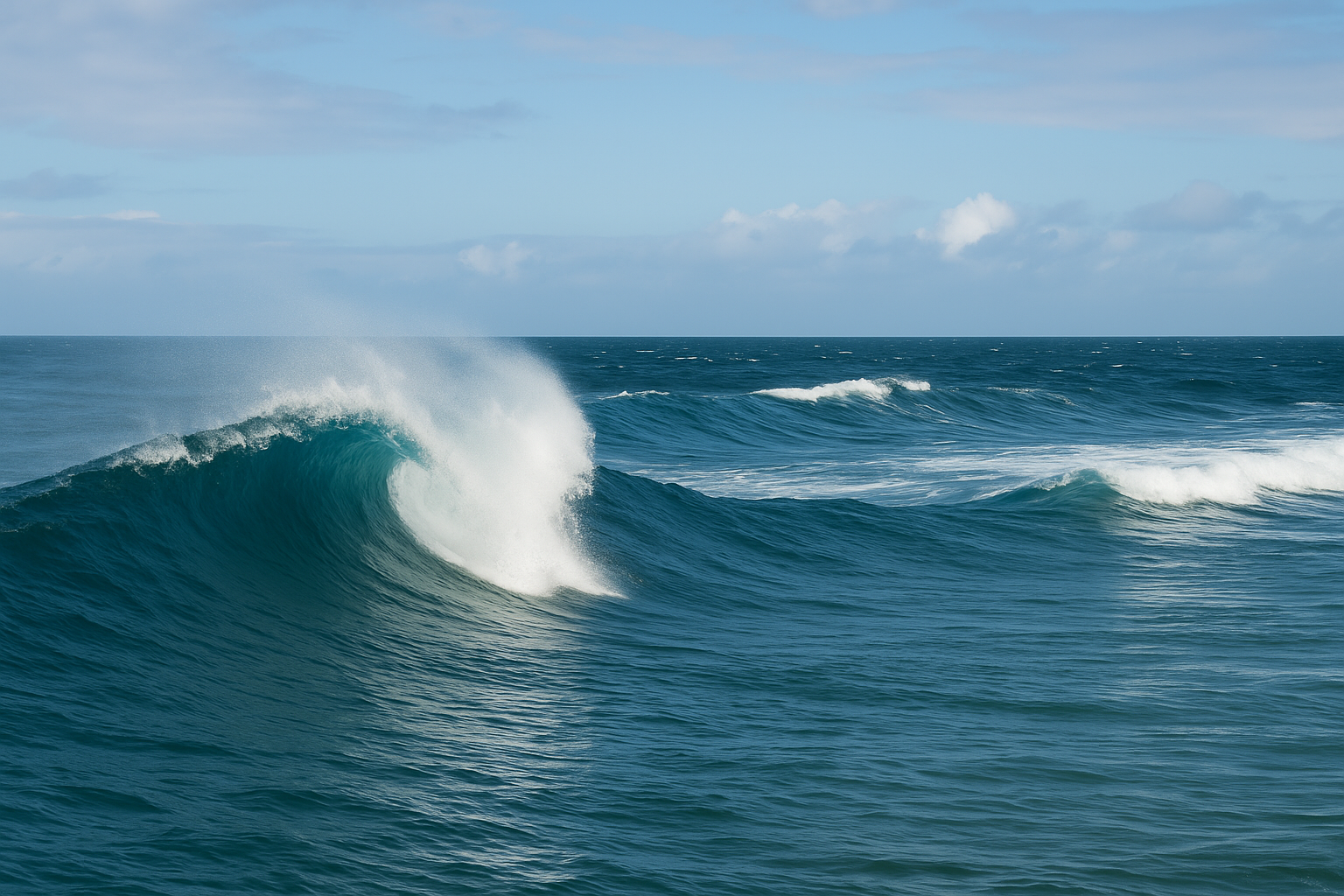Wave Forecasting Models and Future Trends
Activities like shipping, fishing, offshore energy, coastal defense, and marine tourism rely heavily on sea and weather conditions, requiring reliable marine forecasts that extend up to ten days in advance. What advancements are expected in wave data prediction and modeling?
Wave Forecasting Models
Wave forecasting models simulate how wind energy transforms into waves and spreads across the ocean. These models rely on inputs like wind speed, atmospheric pressure, and bathymetry to estimate wave behavior such as height, period, and direction. Below are three widely used models, each with unique capabilities:
Simulating WAves Nearshore
SWAN is designed for coastal and shallow waters. This numerical wave model uses inputs such as wind, water depth, and bottom friction to simulate wave growth, decay, and interactions. SWAN is often applied to study coastal safety, harbor design, and navigation. It processes local measurements from buoys and sensors and helps predict wave heights during storms and tidal events.
WAVEWATCH III
WAVEWATCH III is a spectral wave model developed by NOAA for deep and global waters. It incorporates global wind fields and ocean parameters to simulate the propagation of waves across oceans. It supports marine weather operations by predicting long-period swells and complex wave interactions.
Spectral Wave Models
Spectral models analyze the distribution of wave energy across different frequencies and directions. They use wave spectra from sensors and satellite data to estimate how waves evolve over time. These models are key for capturing mixed wave systems in both coastal and open waters and are often validated using global buoy networks..
Comparing Traditional and Machine Learning-Based Forecasting
Both Traditional and Machine Learning approaches offer valuable tools to predict waves, yet they differ in flexibility and performance. Traditional wave models use physics-based equations, driven by inputs like wind, bathymetry, and pressure.
These models rely on structured data from sensors, buoys, and global figures to calculate wave height, period, and direction with validated values. In contrast, Machine Learning models, such as neural networks or ensemble techniques, learn from vast datasets to identify complex patterns. They adapt quickly to new data, making them more responsive and scalable. ML can incorporate irregular inputs and outperform in scenarios where physical models struggle with nonlinear wave behavior. While traditional methods remain essential for validation and transparency, ML opens paths to smarter forecast strategies.
Emerging Trends and Tools
Wave monitoring is evolving rapidly with the integration of digital technologies that enhance accuracy and accessibility. What are the innovations shaping the next generation of wave monitoring?
AI-Powered Prediction
Artificial Intelligence (AI) tools like neural networks analyze large datasets from buoys, sensors, and satellite imagery to detect patterns in wave behavior. These models improve forecast accuracy and adapt to changing marine environments.
IoT-Enabled Sensing
The Internet of Things (IoT) connects smart buoys and floating sensors in real time. These devices transmit wind and wave data instantly, increasing responsiveness and reducing reliance on periodic manual readings.
Remote Sensing Advances
Satellite-based altimetry and SAR (Synthetic Aperture Radar) technology allow global wave measurements, even in remote areas. These tools help figure out large-scale wave patterns over long periods.
Cloud-Based Platforms and Open Data
Real-time dashboards and APIs (Application Programming Interface) from sources like Google Earth Engine support collaborative research. Open-source tools and public datasets encourage broader participation and innovation in wave monitoring.
Our Wave Forecasting Solutions for Offshore Success
As a specialist in data collection, real-time monitoring, and environmental impact assessments for offshore wind farms and government agencies, we empower marine professionals with advanced tools to streamline planning and decision-making. Our company offers Open Ocean, the next generation of Metocean Analytics, built on over 10 years of expertise. With it, teams can analyze wind, wave, current, temperature, and salinity data using reliable hindcasts and real-time insights. We help users simulate operations, define key values, and generate detailed reports tailored to site-specific needs. Reducing weather-related risks and enhancing forecasting accuracy enables us to support our clients in winning tenders and optimizing offshore operations.
Conclusion
We may see the waves as beautiful and calming, but understanding and monitoring them is crucial for safety and planning. Measuring waves helps protect coastlines, guide ships, build strong marine structures, and support renewable energy. Advances like artificial intelligence and smart sensors make wave monitoring faster and more accurate.
